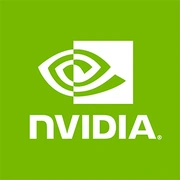NVIDIA GRID K260Q

The NVIDIA GRID K260Q GPU is a professional-grade graphics card designed for heavy-duty graphic and video rendering tasks. With a memory size of 2GB and GDDR5 memory type, this GPU offers high-speed and smooth performance, making it ideal for demanding applications and workloads. The 1250MHz memory clock further enhances the card's capability to handle large data sets and complex simulations with ease.
With 1536 shading units and a 512KB L2 cache, the K260Q GPU is capable of delivering high-quality visuals and fast rendering times. Its 2.289 TFLOPS theoretical performance makes it a powerful tool for professionals working in industries such as animation, engineering, and scientific research, where complex visualizations and simulations are common.
In terms of power consumption, the K260Q has a TDP of 225W, which may be on the higher side compared to some consumer-grade GPUs, but is necessary to support its high-performance capabilities. Additionally, the K260Q GPU is well-suited for server-based deployments, where power consumption may be less of a concern.
Overall, the NVIDIA GRID K260Q GPU is a reliable and efficient solution for professionals who require a high-performance graphics card for their work. Its robust specifications and powerful performance make it a valuable asset for tasks that demand exceptional visual fidelity and computational capability.
Basic
Label Name
NVIDIA
Platform
Professional
Launch Date
June 2013
Model Name
GRID K260Q
Generation
GRID
Bus Interface
PCIe 3.0 x16
Transistors
3,540 million
TMUs
?
Texture Mapping Units (TMUs) serve as components of the GPU, which are capable of rotating, scaling, and distorting binary images, and then placing them as textures onto any plane of a given 3D model. This process is called texture mapping.
128
Foundry
TSMC
Process Size
28 nm
Architecture
Kepler
Memory Specifications
Memory Size
2GB
Memory Type
GDDR5
Memory Bus
?
The memory bus width refers to the number of bits of data that the video memory can transfer within a single clock cycle. The larger the bus width, the greater the amount of data that can be transmitted instantaneously, making it one of the crucial parameters of video memory. The memory bandwidth is calculated as: Memory Bandwidth = Memory Frequency x Memory Bus Width / 8. Therefore, when the memory frequencies are similar, the memory bus width will determine the size of the memory bandwidth.
256bit
Memory Clock
1250MHz
Bandwidth
?
Memory bandwidth refers to the data transfer rate between the graphics chip and the video memory. It is measured in bytes per second, and the formula to calculate it is: memory bandwidth = working frequency × memory bus width / 8 bits.
160.0 GB/s
Theoretical Performance
Pixel Rate
?
Pixel fill rate refers to the number of pixels a graphics processing unit (GPU) can render per second, measured in MPixels/s (million pixels per second) or GPixels/s (billion pixels per second). It is the most commonly used metric to evaluate the pixel processing performance of a graphics card.
23.84 GPixel/s
Texture Rate
?
Texture fill rate refers to the number of texture map elements (texels) that a GPU can map to pixels in a single second.
95.36 GTexel/s
FP64 (double)
?
An important metric for measuring GPU performance is floating-point computing capability. Double-precision floating-point numbers (64-bit) are required for scientific computing that demands a wide numeric range and high accuracy, while single-precision floating-point numbers (32-bit) are used for common multimedia and graphics processing tasks. Half-precision floating-point numbers (16-bit) are used for applications like machine learning, where lower precision is acceptable.
95.36 GFLOPS
FP32 (float)
?
An important metric for measuring GPU performance is floating-point computing capability. Single-precision floating-point numbers (32-bit) are used for common multimedia and graphics processing tasks, while double-precision floating-point numbers (64-bit) are required for scientific computing that demands a wide numeric range and high accuracy. Half-precision floating-point numbers (16-bit) are used for applications like machine learning, where lower precision is acceptable.
2.243
TFLOPS
Miscellaneous
Shading Units
?
The most fundamental processing unit is the Streaming Processor (SP), where specific instructions and tasks are executed. GPUs perform parallel computing, which means multiple SPs work simultaneously to process tasks.
1536
L1 Cache
16 KB (per SMX)
L2 Cache
512KB
TDP
225W
Vulkan Version
?
Vulkan is a cross-platform graphics and compute API by Khronos Group, offering high performance and low CPU overhead. It lets developers control the GPU directly, reduces rendering overhead, and supports multi-threading and multi-core processors.
1.1
OpenCL Version
3.0
OpenGL
4.6
DirectX
12 (11_0)
CUDA
3.0
Shader Model
5.1
ROPs
?
The Raster Operations Pipeline (ROPs) is primarily responsible for handling lighting and reflection calculations in games, as well as managing effects like anti-aliasing (AA), high resolution, smoke, and fire. The more demanding the anti-aliasing and lighting effects in a game, the higher the performance requirements for the ROPs; otherwise, it may result in a sharp drop in frame rate.
32
Suggested PSU
550W
Benchmarks
FP32 (float)
Score
2.243
TFLOPS
Compared to Other GPU
FP32 (float)
/ TFLOPS
Share in social media
Or Link To Us
<a href="https://cputronic.com/en/gpu/nvidia-grid-k260q" target="_blank">NVIDIA GRID K260Q</a>